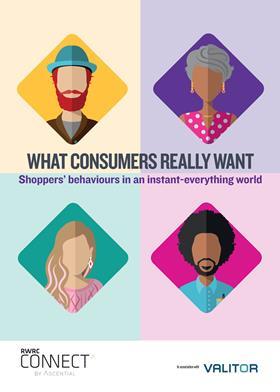PROMOTIONAL RESEARCH
To deliver an outstanding customer experience, retailers need to move beyond basic demographics to understand how people behave when they shop, according to a major new Retail Week report.
What Consumers Really Want explores the rise of behavioural marketing, which categorises consumers based on their attitudes, motivations and interests, as a more sophisticated means of customer segmentation.
“Retailers often look to group similar customers together, and basic demographics is an easy way of doing this,” says Amy Nichols, research director at Walnut Unlimited, which describes itself as ‘the human understanding agency’.
“We shouldn’t assume that all 25-year-olds think and feel in the same way. Retailers need to consider what people buy, what they are interested in and what their attitudes are”
Amy Nichols, Walnut Limited
However, Nichols adds: “We shouldn’t assume that all 25-year-olds think and feel in the same way. Nor should we assume all 70-year-olds are the same. Retailers need to consider what people buy, what they are interested in and what their attitudes are.”
Rejecting traditional profiling
Itch, the recently launched online subscription service for pet treatments, is a classic example of a retailer that has rejected traditional demographic profiling.
“For us, it’s all about life stage and behaviour,” says chief marketing officer Charlotte Harper, who has identified time-poor families as the core customer for Itch.
“Of course, the way you buy media, especially above-the-line, is against demographics, but for me it’s absolutely about life stage because you could be a very young parent, or a very old parent. It’s actually irrelevant to me what the age is. We talk to them knowing what that chaotic stage of life is like.”
Nichols adds that the more sophisticated brands can be with their marketing techniques the better. But keeping communications simple, timely and direct is also crucial.
“It’s important to be personal with your customers – and we know this is something shoppers want,” she says.
“While identifying common behaviours and customer types is critical to give you focus in your creative messaging and the services you offer, the more granularity you can have in who you are targeting and when can make all the difference.”
“We’re using our customers’ data, not in a Big Brother way, but to improve the user experience”
Charlotte Harper, Itch
Digital marketing is increasingly moving towards segmenting people, not as representatives of an age or income group, but as individuals with highly specific interests and behaviours.
“We’re using our customers’ data, not in a Big Brother way, but to improve the user experience,” says Harper.
“We can seamlessly move them into other areas by providing reminders such as: ‘Did you know you should be worming your pet at this time because we know you have this particular breed, and it’s this age?’ That’s what gives us such an edge.”
Download What Consumers Really Want today to find out:
- Why demographics are dead and have been survived by four new shopper personas
- How retailers can align their shopping experiences to cater to the desires and values of these modern shoppers
- How case studies Nespresso, Stitch Fix and Lush have successfully created experiences based on the drivers and motivators of their customers.
































